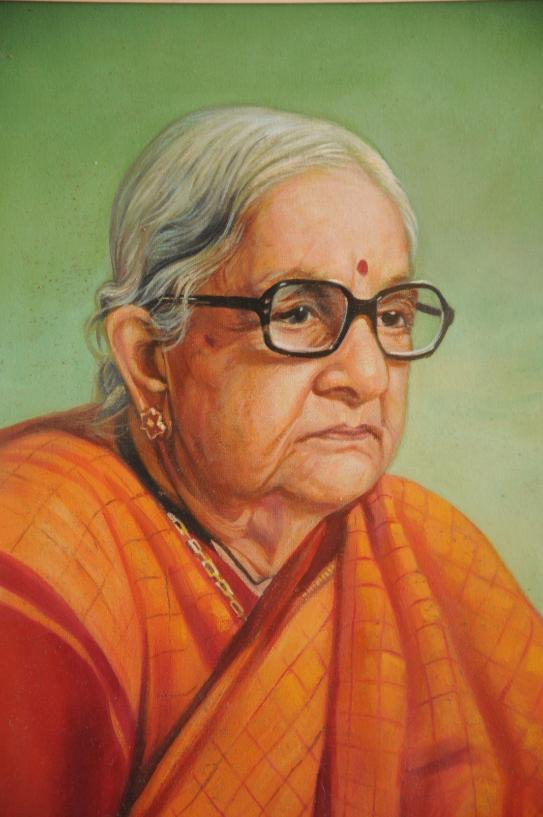
03-04-1903
-
29-10-1988
कमलादेवी चट्टोपाध्याय भारताचे समाज सुधारकी, स्वातंत्र झुजारी जावनसली. ती 03-04-1903 इसवेंत मंगळूरांत जल्मली. सारस्वत कोंकणी समुदायाचे अनंतय्य धारेश्वर आनी गिरिजाबाय तिगेले आवय बापय जावनसल्ले. भारताचे स्वातंत्र उप्रांत हस्तकला, हातमग आनी नाटक क्षेत्राक तीणे दिलेले देणगी अपार जावनसा. आर्थीक आनी सामाजीक दुबळे बायलांक सहकारी पद्धत शुरुवात करचे मुखांतर तीणे तांगेले जीवनांत सुधारण हाडच्याक केलेलें काम अविस्मरणीय जावनसा. तिगेले दूर दर्शित्वान भारतांत संगीत नाटक अकाडेमी, नेशनल स्कूल ऑफ़ ड्रामा, सेंट्रल कोटेज इंडस्ट्रीस एंपोरियम आनी क्रेफ़्टस कौन्सिल ऑफ़ इंडिया स्थापन जालां.
सामाजीक क्रांती
कमलादेवी 16 वरसारीच विधव जाली आनी ती समाज खातीर वावर करताली. तीणे स्त्रीयालें समस्या, बाल्यविवाह विरुद्ध झूज मांडलें. तीणे मद्रा्साचे क्वीन मेरीस कोलेजांत शिक्षण घेतलें. उप्रांत 20 वरस प्रायेर हरींद्रनाथ चट्टोपाध्याय सांगत तिगेलें दूसरे लग्न जालें. लग्ना उप्रांत तिका लंडनांत उच्छ शिक्षण घेवचो अवकाश लाभलो. घोवाले फाटबळान तीणे साभार नाटक आनी चलनचित्रांत अभिनय केलें. 1923 इसवींत कमलादेवी भारताक येवन सेवा दलाक मेळनु चेल्यांक आनी बायलांक स्वयंसेविका तरबेत दिलें. तीणे महात्मा गांधी सांगत मिटा चळवळ आनी स्वातंत्र झूजांत सक्रीय जावन भाग घेतलां. स्वातंत्र उप्रांत निराश्रितांक जीवनाक आधार दिवचे खातीर तांगेले हस्तकला आनी हातमगाक पुनरुज्जीवन दिलें. ती भारतीय सहकार यूनियनाचे अध्यक्षा, विश्वकरकुशल मंडळीचे उपाध्यक्षा, अखील भारत विन्यास केंद्राचे अध्यक्षा, अंतराष्ट्रीय रंगभूमी संस्थेचे अध्यक्षा, भारतीय रंगभूमी केंद्राचे संस्थापकी जावनशीली. कमलादेवीन भारतीय स्वातंत्र झूज तशेंच भारताचे करकुशल कला, लोकनृत्य विशयांत पुस्तक बोरोवन प्रकट केल्यात.
मान सम्मान
कमलादेवीक भारत सरकाराचे पद्म भूषण (1955), पद्म विभूषण प्रशस्ती (1987) लाभला. तशेंच युनेस्को प्रशस्ती (1977), देशीकोत्तम प्रशस्ती, रामन म्याग्सेसे प्रशस्ती (1966), संगीत नाटक अकाडेमीचे फ़ेलोशिप (1977) लाभलां.
Kamaladevi Chattopadhyay was an Indian social reformer and freedom activist. She was born on 03-04-1903 in Mangalore. Ananthayya Dhareswar and Girija Bai were her parents. She was most remembered for her contribution to the Indian independence movement, Indian handicrafts, handlooms and theatre in Independent India, for upliftment of the socio-economic standard of Indian women by pioneering the co-operation.
Social Revolution
Several cultural institutions in India today exist because of her vision, including the National School of Drama, Sangeet Natak Akademi, central Cottage Industries Emporium and the Crafts Council Of India. She became widow at the very early age of 16. Meanwhile, studying in Queen Mary’s college in Chennai, Kamaladevi remarried Harindranath a wel-known poet-playwright-actor, much to the opposition of the orthodox society. After her marriage she went to London and continued her education in Bedford College, University of London. Later she acted in films like Tansen, Khursheed, Shankar Parvati, Dhanna Bhagat and silent film Mricchakatika with the support of her husband. In 1923, she returned to India and join the Seva Dal. where she got involved in recruiting, training and organising girls and women across India to become voluntary workers, Sevikas. She actively took part in Salt Satyagraha and freedom struggle. After Indipendence of India she began to work in rehabilitation of refugees as well as revival of Indian handicrafts and handloom. She was president of Indian Co-operative Union, Vice-president of world Crafts Council, Chairman of All India Handicrafts Board, founder of National School of Drama. Kamaladevi has penned many books on handicrafts, folk dance, freedom struggle, theatre and socialism.
Honours
The Government of India conferred her the Padma Bhushan in 1955 and the Padma Vibhushan in 1987. She was awarded the Ramon Magsaysay Award in 1966, Sangeet Natak Academi Fellowship in 1974, UNESCO award in 1977, Desikottama award from Shantiniketan and Vishwabharathi Award.